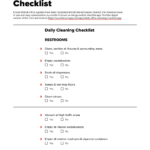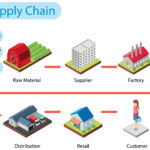FINTECH
Opay (Okash loan) – Everything you Need to Know on How to Access Opay loan

Opay (Okash loan) – Everything you Need to Know on How to Access Opay loan
Are you searching for a quick loan without the hassle of collateral or guarantors? Look no further, as Nigeria offers numerous online loan services that provide a swift and straightforward path to credit.
Among these services, Opay stands out as one of the premier lending platforms. Opay’s app grants users access to instant loans from reputable lenders.
In this article, we will comprehensively cover all you need to know about borrowing money from Opay. Whether you’re interested in learning how to secure a loan via the Opay app, the process to borrow money from Opay without needing a BVN, or how to obtain an Opay loan on iPhone and Android devices, we’ve got you covered.

Opay (Okash loan) – Everything you Need to Know on How to Access Opay loan
Our discussion will encompass eligibility criteria, the loan application process, interest rates, and loan repayment procedures. By the end of this article, you’ll have a solid understanding of how to navigate the world of Opay loans in Nigeria.
About Opay (Okash) Loan
Opay, including its financial service known as Okash Loan, is a prominent financial technology (fintech) company that operates primarily in Nigeria and other African countries. Opay offers various services, including mobile payments, ride-hailing, food delivery, and digital lending through its Okash platform.
Okash Loan is one of Opay’s flagship products, providing short-term loans to individuals needing quick financial assistance. Here are some critical points about Opay (Okash) loan:
- Accessibility: Okash loans are easily accessible through the Opay mobile app, which is available for Android and iOS users. This accessibility makes it convenient for users to apply for loans anytime, anywhere.
- No Collateral: One of the notable features of Okash loans is that they typically do not require collateral or a guarantor. This means users can access credit without having to pledge assets or involve third parties.
- Loan Amount: Okash offers a range of loan amounts, depending on a user’s creditworthiness and repayment history. New users may start with smaller loan amounts, and as they build a positive borrowing history, they can qualify for larger loans.
- Interest Rates: Okash charges interest on the loans it disburses like most digital lending platforms. The interest rates can vary and are typically communicated clearly to borrowers during application.
- Repayment Terms: Okash loans are typically short-term, with repayment periods ranging from a few days to a few weeks. Users are expected to repay the loan within the agreed-upon timeframe.
- Eligibility Criteria: To access Okash loans, users need to meet specific eligibility criteria, including having a verifiable source of income, a valid identification document, and a functional bank account.
- Application Process: Applying for an Okash loan is usually straightforward and can be done within the Opay app. Users provide the necessary information, and after a quick review, they receive loan offers based on their eligibility.
- Customer Support: Opay typically provides customer support channels for users who have questions or encounter issues with their loans, enhancing the overall user experience.
It’s essential for users considering Okash loans or any digital lending service to carefully review the terms, interest rates, and repayment schedules to ensure they are comfortable with the terms before borrowing. Responsible borrowing and timely repayment are crucial to maintaining a positive credit history and accessing more significant loan amounts in the future.
Eligibility Criteria for Applying for Opay(Okash) Loan
To become eligible for an Opay loan, you must satisfy specific criteria. These eligibility prerequisites include:
- Nigerian Citizenship: You need to be a citizen of Nigeria to access Opay’s loan services.
- Registered Opay Account: Ensure you have a registered Opay account. This involves signing up for an account on the Opay mobile app.
- Valid Bank Verification Number (BVN): You must possess a valid BVN, which is a crucial identifier for financial transactions in Nigeria.
- Valid Identification: You should have a valid means of identification, such as a National ID card, driver’s license, or international passport. Any of these forms of ID will suffice.
Meeting these four requirements will make you eligible to apply for a loan with Opay.
Where and How to Download Opay (Okash) Loan App
To download the Opay (Okash) Loan app, you can follow these steps based on your device’s operating system:
For Android Devices:
- Open the Google Play Store on your Android smartphone or tablet.
- In the search bar at the top, type “Okash” and press Enter.
- Look for the official Okash app, which should be listed as “Opay: Mobile Money Transfer, Payment & Bank.”
- Click on the Opay app listing.
- Tap the “Install” button to download and install the app on your Android device.
For iOS (iPhone) Devices:
- Open the Apple App Store on your iPhone or iPad.
- In the search bar at the bottom, type “Opay” and press Enter.
- Look for the official Opay app, which should be listed as “Opay: Mobile Money Transfer, Payment & Bank.”
- Tap the “Get” button (or the cloud icon with an arrow) to download and install the app on your iOS device.
Once the app is installed, you can open it and follow the on-screen instructions to set up your Opay account, link your bank account, and start using the various services offered by Opay, including mobile payments, money transfers, and potentially access to financial services like loans if available in your region.
How to Apply for Opay Loan
You have two options to borrow money from OPay: using the OPay app or the USSD code. Here are the steps for borrowing a loan from OPay online:
- Using the OKash App:
Before you can borrow from OPay, ensure you have an active OKash account. You’ll need this during the application process.
Step 1: Download the OKash App from either the Google Play Store or Apple Store.
Step 2: Register for the OKash app with your active phone number.
Step 3: Once registered, apply for the loan through the app.
Step 4: Within the app, you’ll find various loan options, including merchant loans, airtime loans, and cash loans. Choose the one that suits your needs.
Step 5: Input the required loan amount, repayment due date, interest rates, and other necessary information.
Step 6: Select the purpose of the loan from the options provided.
Step 7: The app may request access to your phone’s location; confirm this by clicking “Agree to Continue.”
Step 8: Provide accurate personal information such as your name, BVN, gender, email address, nearest bus stop, and other relevant details.
Step 9:Review your loan application and click “submit.”
Step 10: Wait for the loan to be approved and the funds deposited into your account.
Following these steps, you can easily borrow money from OPay using the OKash App. Please note that loan terms and availability may vary, and it’s essential to review the loan details and ensure responsible borrowing.
Advantages and Disadvantages of Opay (Okash) Loan
OPay simplifies the loan process using OKash, EaseMoni, and CreditMe, making obtaining and repaying loans straightforward. This trusted mobile platform provides quick access to legitimate instant loans, with a track record of positive reviews on the Play Store.
Applying for a loan through these apps is a hassle-free experience, with funds disbursed to your account within minutes. Here are some key advantages and disadvantages of using OPay for loans:
Advantages
- Periodic Bonuses: OPay offers occasional bonuses, enhancing the value for borrowers.
- Easy Sign-Up: The sign-up process is user-friendly, reducing barriers to entry.
- Speed and Security: Loan processing is rapid and secure, ensuring a seamless experience.
- No Collateral Required: No collateral or deposit requirements increase accessibility.
- Mobile Convenience: The loan process can be completed conveniently on your mobile device.
Disadvantages
- High Repayment Costs: Loan repayment costs can be relatively high compared to other options.
- Loan Limit: There’s a maximum limit on the amount you can borrow.
- Short-Term Loans: OPay primarily offers short-term loans, which may only suit some borrowing needs.
- Privacy Concerns: Some users may have privacy concerns when using mobile platforms for financial transactions.
While OPay offers convenience and accessibility, it’s crucial to carefully evaluate the cost and terms of loans to ensure they align with your financial goals. Additionally, consider exploring alternative borrowing options to find the most suitable solution for your needs.
Opay Loan Code
Access OPay’s loan services using the USSD code *955#. This convenient code streamlines transactions for users with existing accounts on the platform. To initiate a loan request, follow these straightforward steps:
- Dial *955# from your mobile phone.
- Follow the on-screen instructions provided by the USSD menu.
OPay’s loan service through this USSD code allows you to apply for amounts ranging from as low as ₦3,000 to a maximum of ₦500,000. This accessible feature simplifies the loan application process for OPay users.
Opay Loan (Okash Loan) Interest Rate
Opay’s Okash Loan service offers a daily interest rate ranging from 0.1% to 1%, resulting in an annual interest rate between 36.5% and 360%.
Additionally, borrowers must pay an origination fee, which varies from N1299 to N6000. The loan duration spans from a minimum of 91 days to a maximum of 365 days, providing flexibility to borrowers.
How to Repay Opay Loan (Okash Loan)
Repaying your Opay Loan is a straightforward process:
- Open the Opay mobile app.
- Log in to your Opay account.
- Locate and click on the ‘make a repayment’ button.
- Provide all the required details for the repayment.
- Click the ‘repay’ button to initiate the repayment process.
It’s worth noting that Opay employs an automated system that debits your bank account when the loan repayment is due.
If you have a sufficient balance in your account, you may not need to go through the manual repayment steps mentioned above, as the system will handle it automatically. This automated process ensures timely repayments for borrowers.
Contact Details
- Tel: 0700 888 8328 or 01 8888328(App & Card queries)
- Email: customerservice@opay-inc.com
FAQs
How much can I borrow on Opay?
The loan amount you can access through Opay depends on several factors, including the lending company you choose, your creditworthiness, and other pertinent criteria. However, meeting all requirements can allow you to borrow up to one million naira.
Does Opay give loans?
Yes, Opay facilitates loans through third-party platforms such as Okash and Easemoni. These platforms offer loan services to eligible users within the Opay ecosystem.
How do you borrow money from Opay without BVN?
To secure a loan from Opay without a Bank Verification Number (BVN), you can start by creating a Basic (Tier 1) account with Opay.
Afterward, you can apply for a loan using the Opay app through services like Easemoni or Okash. Please keep in mind that, initially, you may only be eligible for a smaller loan amount until you link your BVN to your Opay account.
Opay (Okash loan) – Everything you Need to Know on How to Access Opay loan (Summary)
Opay’s Okash loan service offers a convenient and accessible way for individuals to access quick financial assistance. From understanding the eligibility requirements to exploring the application process, interest rates, and repayment methods, we’ve covered all the essential aspects of accessing Opay loans.
Whether you’re seeking to bridge a financial gap, seize an opportunity, or manage unexpected expenses, Opay provides a valuable solution. Remember to borrow responsibly, review the terms carefully, and ensure timely repayments to maximize this financial tool.
Opay’s Okash loan can be a reliable resource on your financial journey, providing the support you need when you need it.
More from my site
FINTECH
Kazang Pay launches card acquiring service in Zambia

Kazang (www.Kazang.com), the prepaid value-added services (VAS) and card acquiring business within JSE-listed fintech Lesaka Technologies, has launched its Kazang Pay card acceptance solution for merchants in Zambia. Kazang Pay makes it affordable for merchants to accept card payments on the same Kazang terminal they use to sell prepaid products and services.

The Kazang Pay enabled terminal in Zambia accepts VISA debit and credit cards as well as mobile wallet payments. Payments are settled to the merchant’s Kazang wallet on the same day. It’s as easy as letting the customer tap or insert their bank card and enter their PIN on the secure scramble PIN pad.
Kazang operates around 12,000 VAS terminals in Zambia. The goal is to enable the majority to accept card payments over the next six months. Benefits to merchants include low transaction fees and no monthly terminal rental fee for those that meet a modest monthly transaction threshold as well as the opportunity to grow their business through card acceptance.
Kazang is Zambia’s largest VAS point-of-sale terminal provider, enabling mobile money payments, bank and mobile money cash in and out, bill payments, airtime, Zesco, and many other prepaid services on one platform. The addition of card acceptance makes the platform even more comprehensive for merchants and consumers alike.
The launch of Kazang Pay in Zambia follows the introduction of the solution in South Africa, where around 60,000 small and micro merchants use Kazang Pay to accept card payments. In Zambia, there are around 3.8 million debit, credit and ATM cards in issue and 41,000 point of sale (POS) terminals in place. The value of POS transactions has grown to K 111.4 billion by 2022 from less than K 20 billion in 2018, according to the Bank of Zambia.
Says Leon de Wit, managing director at Kazang Zambia: “Zambia has made enormous strides in terms of financial inclusion, with card usage and penetration growing at a rapid pace. With Kazang Pay, merchants can now easily accept card payments on the same all-in-one terminal they already use for vending of VAS products.
“Card transactions help merchants to grow basket sizes and potentially attract more customers, and at the same time, reduce the risks and costs of handling cash. Moving towards digitalised payments will also enable merchants to track sales, manage cash flow, and create a footprint that could make it easier for them to access loans.”
Ashley Naidoo, director of Kazang Pay in South Africa says: “Our Zambian merchants have eagerly embraced our card acquiring service as a valuable part of our one-stop solution. Following the launch of Kazang Pay in Zambia, we have seen higher VAS sales across our merchant base and much-improved merchant retention and with our card acquiring solution we now appeal to a broader merchant base.”
Distributed by APO Group on behalf of Kazang.
ABOUT KAZANG:
Kazang (www.Kazang.com) is a leading provider of cash and digital solutions to merchants in Southern Africa’s informal economies. Our fintech solutions include a diverse range of value-added services (VAS), card acquiring, secure cash vaults and supplier payments platforms. Operating with a network of approximately 90,000 active devices, we process approximately 2.2 million transactions daily in markets such as South Africa, Namibia, Botswana, and Zambia.
We are dedicated to helping small and medium merchants grow and succeed, through increasing their sales, making their businesses more efficient and reducing their risks with its holistic portfolio of products and services. Kazang is a member of Lesaka Technologies (https://LesakaTech.com).
ABOUT LESAKA TECHNOLOGIES, INC:
The Connect Group and Kazang was acquired by Lesaka Technologies, Inc. in April 2022. Lesaka Technologies, (Lesaka™) is a South African Fintech company that utilizes its proprietary banking and payment technologies to deliver superior financial services solutions to merchants (B2B) and consumers (B2C) in Southern Africa. Lesaka’s mission is to drive true financial inclusion for both merchant and consumer markets through offering affordable financial services to previously underserved sectors of the economy. Lesaka offers cash management solutions, growth capital, card acquiring, bill payment technologies and value-added services to retail merchants as well as banking, lending, and insurance solutions to consumers across Southern Africa.
Lesaka has a primary listing on NASDAQ (NasdaqGS: LSAK) and a secondary listing on the Johannesburg Stock Exchange (JSE: LSK). Visit www.LesakaTech.com for additional information about Lesaka Technologies (Lesaka ™). $LSK / $LSAK
More from my site
Bitcoin
Binance expands crypto access in West and Central Africa with mobile money integration
Binance expands crypto access in West and Central Africa with mobile money integration
This new service currently supports only BUY transactions, further simplifying the entry point for new crypto users in these regions
Binance (www.Binance.com), the world’s leading blockchain and cryptocurrency infrastructure provider continues to drive innovation and expand access to cryptocurrency in Africa, now allowing users in Benin, Cameroon, Ivory Coast, Democratic Republic of Congo (DRC), Togo and Senegal to purchase crypto directly through mobile money payments enabled through local partnerships.
This new functionality further strengthens Binance’s commitment to providing simple and secure access to cryptocurrency for users across the continent, reinforcing the platform’s vision of financial inclusion.
Samantha Fuller, Spokeswoman for Binance says “We remain focused on advancing financial inclusion and delivering user-friendly solutions for crypto adoption across Africa. This expansion into West and Central Africa is a significant step in our mission to increase crypto adoption, providing millions of people with more direct access to the global digital economy”.
This new service currently supports only BUY transactions, further simplifying the entry point for new crypto users in these regions, while providing them with a reliable and secure platform to acquire digital assets.
How to buy crypto:
Log in to your Binance app and select [Add Funds] from the homepage.
Choose your local fiat currency you wish to use by selecting the currency in the top-right column.
Follow the instructions to complete your crypto purchase.
Distributed by APO Group on behalf of Binance.
About Binance:
Binance is the world’s leading blockchain ecosystem and cryptocurrency infrastructure provider with a financial product suite that includes the largest digital asset exchange by volume. Trusted by millions worldwide, the Binance platform is dedicated to increasing the freedom of money for users and features an unmatched portfolio of crypto products and offerings, including trading and finance, education, data and research, social good, investment and incubation, decentralisation and infrastructure solutions, and more. For more information, visit: https://www.Binance.com
Risk Warning: Digital asset prices are subject to high market risk and price volatility. The value of your investment may go down or up, and you may not get back the amount invested. You are solely responsible for your investment decisions and Binance is not liable for any losses you may incur. Past performance is not a reliable predictor of future performance. You should only invest in products you are familiar with and where you understand the risks. You should carefully consider your investment experience, financial situation, investment objectives and risk tolerance and consult an independent financial adviser before investing. This material should not be construed as financial advice. For more information, see our Terms of Use and Risk Warning.
More from my site
BANKING
Financial Analysis: A Comprehensive Study of The Well-Being of A Country

Financial Analysis: A Comprehensive Study of The Well-Being of A Country
Understanding the financial stability of a country requires a thorough understanding of financial analysis. In order to offer insights into the overall financial stability and overall wellness of the country, it entails evaluating a range of economic indicators, financial performance, and market movements.
In this article, we will delve into the fundamentals and importance of financial analysis in evaluating a country’s economic situation.
THE HISTORY ABOUT FINANCIAL ANALYSIS
Ancient Beginnings:
The roots of financial analysis can be traced back thousands of years. The ancient Mesopotamians, Egyptians, and Greeks were among the pioneers of documenting financial transactions, creating basic records of assets and liabilities. These early attempts laid the groundwork for the concept of financial analysis through the study of financial statements and ledgers.
Medieval Europe:
During the Middle Ages, Europe witnessed the rise of merchant guilds and the emergence of double-entry bookkeeping. Italian mathematician and Franciscan friar, Luca Pacioli, is often credited with formalizing double-entry bookkeeping, publishing his seminal work “Summa de arithmetica, geometria, proportioni et proportionalita” in 1494. The concept of balancing debits and credits within financial records formed the basis for modern financial analysis techniques.
Industrial Revolution:
The Industrial Revolution in the 18th and 19th centuries revolutionized business and the need for financial analysis grew rapidly. As companies expanded and diversified, investors began demanding more comprehensive financial reports to assess the potential risks and returns of their investments. The birth of limited liability companies further accelerated the need for financial analysis, as shareholders sought transparency in the performance of their investments.
Modern Era:
The 20th century witnessed significant advancements in financial analysis techniques. The advent of electronic computing in the mid-1900s enabled the processing and analysis of vast amounts of financial data, leading to the development of sophisticated financial models and ratios.
The Great Depression of the 1930s laid the groundwork for modern financial analysis as regulators sought effective ways to prevent future economic crises. The establishment of the U.S. Securities and Exchange Commission (SEC) in 1934 brought about standardized reporting requirements, including the filing of audited financial statements. This increased transparency and standardized financial reporting provided analysts with a more accurate and consistent basis for their analysis.
The Rise of Quantitative Analysis:
In the latter half of the 20th century, the growth of computing power and the availability of large data sets propelled financial analysis into new territory. Quantitative analysis, utilizing statistical models and mathematical algorithms, started gaining prominence. Financial analysts began incorporating complex mathematical methods to assess investment opportunities, risk management, and portfolio optimization.
Modern Financial Tools:
With the advent of the internet and the digital age, financial analysis has become even more accessible and data-driven. Sophisticated software programs, data analytics tools, and artificial intelligence have revolutionized the way financial data is analyzed and interpreted. In recent years, technologies like machine learning have been leveraged to develop predictive models that can assess future trends and make accurate financial forecasts.
MEANING
Financial analysis is the process of evaluating businesses, projects, budgets, and other finance-related transactions to determine their performance and suitability. Typically, financial analysis is used to analyze whether an entity is stable, solvent, liquid, or profitable enough to warrant a monetary investment.
Financial analysis is a fundamental tool that allows organizations and individuals to assess the past, present, and future financial health of a business or investment. Through a systematic examination and interpretation of financial statements, ratios, and other key indicators, financial analysis helps in making informed decisions, optimizing resources, and improving overall financial performance. In this article, we will delve into the meaning of financial analysis, its prominent components, and its significance across various sectors.
Financial analysis involves scrutinizing financial data to evaluate the performance and profitability of an entity. It assists in quantifying the effectiveness of financial decisions, identifying trends, predicting future outcomes, and benchmarking against industry standards. By analyzing financial statements, investors, analysts, and other stakeholders gain valuable insights into the financial position, liquidity, solvency, and operational efficiency of an organization.
FUNDAMENTALS OF FINANCIAL ANALYSIS IN A COUNTRY
- Gross Domestic Product (GDP): GDP is a primary indicator used to gauge the economic performance of a nation. Financial analysts analyze GDP growth rates and its components, such as consumer spending, government expenditure, investments, and net exports. This analysis helps in determining the overall strength of the economy and identifying areas of potential growth.
- Trade and Balance of Payments: Trade analysis focuses on a country’s imports, exports, and balance of payments. Evaluating trade patterns helps identify sectors driving the country’s economic growth, trade imbalances, and potential risks to the economy from external factors such as changes in global demand or disruptions in supply chains.
- Inflation and Interest Rates: Analyzing inflation rates and interest rates provides insights into the stability of a country’s economy. High inflation erodes purchasing power, while high-interest rates can impact borrowing costs, affect consumer spending, and investment behavior. Financial analysts assess the impact of inflation and interest rates on an economy’s overall competitiveness and economic growth potential.
- Government Debt and Fiscal Policy: Analyzing a country’s government debt levels and fiscal policy is crucial in understanding its financial sustainability. A high level of government debt may lead to increased borrowing costs, reduced investor confidence, and potential risks to economic stability. Evaluating fiscal policies helps determine whether a country is managing its finances effectively and implementing sustainable economic growth strategies.
- Stock Market Performance: The stock market reflects investor sentiment and provides valuable insights into a country’s economic outlook. Analysts evaluate key stock market indices, such as the country’s primary exchange, sector-specific indices, and market capitalization trends. Monitoring stock market performance allows for an understanding of investor confidence, economic growth expectations, and potential risks to the financial system.
- Banking Sector and Financial Institutions: A robust banking sector is essential for economic stability. Financial analysts assess the health of the banking system by evaluating indicators such as non-performing loans, capital adequacy ratios, and the overall stability and soundness of financial institutions. Understanding the well-being of financial institutions helps gauge the potential risks to the overall economy, including credit availability, liquidity, and financial contagion.
- Regulatory Environment and Governance: The regulatory environment and governance play a critical role in attracting investment and fostering economic growth. Financial analysts assess the effectiveness of regulatory frameworks, transparency in financial transactions, and the overall credibility and efficiency of institutions responsible for enforcing regulations. Evaluating the regulatory environment aids in understanding potential risks and opportunities for sustainable economic development.
SIGNIFICANCE OF FINANCIAL ANALYSIS IN A COUNTRY
Financial analysis plays a vital role across various sectors, serving the following purposes:
- Evaluating Financial Performance: By conducting a comprehensive financial analysis, companies can assess their performance, profitability, and financial stability. This, in turn, helps in identifying areas for improvement, developing strategic plans, and making sound financial decisions.
- Assessing Investment Viability: Investors rely on financial analysis to evaluate the profitability and risks associated with potential investments. Through detailed scrutiny of financial data, investors can determine the financial health and growth prospects of a company, aiding in making informed investment decisions.
- Facilitating Lending Decisions: Financial institutions utilize financial analysis to assess the creditworthiness of loan applicants. By analyzing financial statements, evaluating ratios, and assessing the risk profile, lenders can ascertain the borrower’s ability to repay loans and make sound lending decisions.
- Supporting Strategic Decision-Making: Financial analysis aids in strategic decision-making, such as expansion, diversification, or mergers and acquisitions. Understanding a company’s financial position and performance provides a foundation for evaluating the feasibility and potential outcomes of such decisions.
CONCLUSION
Conducting a comprehensive financial analysis provides valuable insights into the economic landscape of a country. By evaluating indicators such as GDP, trade patterns, inflation rates, government debt, stock market performance, banking sector health, and regulatory environment, financial analysts can gauge the overall financial health, identify potential risks, and recommend strategies for sustainable economic growth. Accurate and timely financial analysis acts as a compass, guiding policymakers, investors, and businesses to make informed decisions and contribute to the overall prosperity of the nation.
More from my site
-
EDUCATION2 years ago
Jamb Cut-Off Mark for A Law Degree in Nigerian Universities
-
BANKING2 years ago
POLARIS Bank Transfer Code| How to Activate the USSD Banking Code
-
BANKING2 years ago
Union Bank Transfer Code| How to Activate the USSD Banking Code
-
BANKING2 years ago
FIRST Bank Transfer Code| How to Activate the USSD Banking Code
-
BANKING2 years ago
How to Check UBA Account Balance From Anywhere
-
BANKING2 years ago
GT Bank Transfer Code| How to Activate the USSD Banking Code
-
BANKING2 years ago
Check GTB Account Balance via Internet and USSD Code
-
BANKING2 years ago
ZENITH Bank Transfer Code| How to Activate the USSD Banking Code


































